Introduction

This is a review of Nikon’s latest fast wideangle lens and how it performs on Sony’s A7 series. It may come as quite a surprise, as I usually prefer using (and reviewing) rangefinder lenses on my A7s.
Sample Images

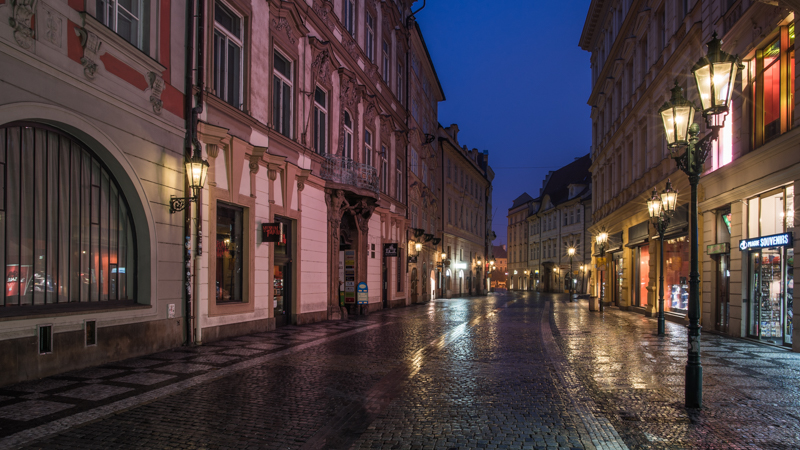
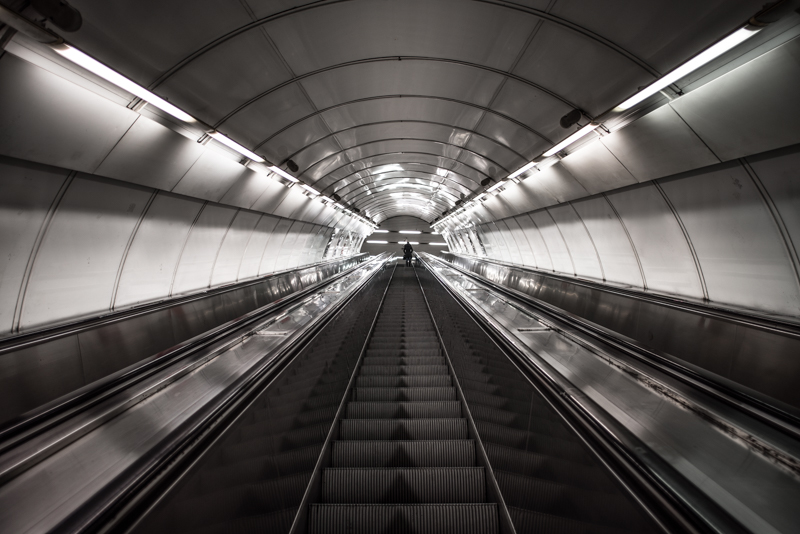
Specifications
-
- Diameter: 80.5 mm
- Field of view: 94° (diagonally)
- Length: 82.5 mm
- Weight: 355g
- Filter Diameter: 77 mm
- Number of Aperture Blades: 7 (curved)
- Elements/Groups: 13/11 (2 ED, 2 aspherical)
- Close Focusing Distance: 0.2 m
- Maximum Magnification: 1:4.3
- Mount: Nikon-G
This lens can be ordered new for $750/650€ on Amazon.com/Amazon.de/B&H you can also find used ones on ebay.com/ebay.de (affiliate links).
Handling / Build Quality
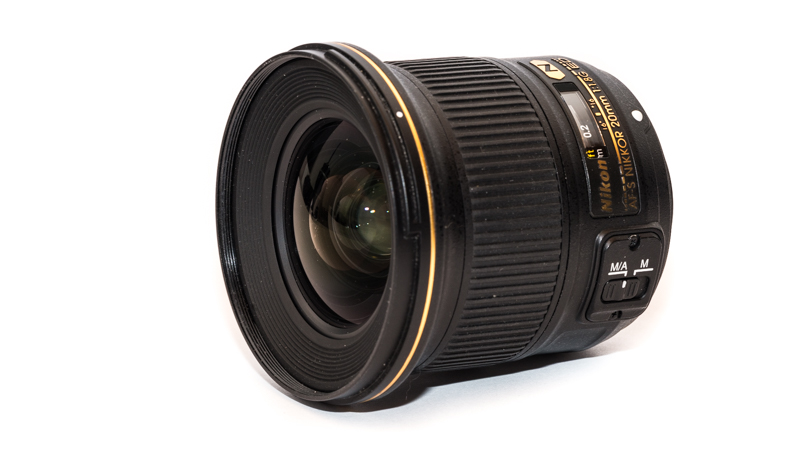
The outer barrel is made from high quality plastics, as are most modern lenses. There are no moving parts on the outside whatsoever (this is a rear focus lens) and it feels pretty solid while still not being particularly heavy. There is one caveat though: the implementation of the manual focus ring is not really great with most AF-S lenses, as there is some slight “slack” between the outer ring and the mechanics on the inside when changing the direction of rotation of the focus ring. This is a common problem that can be found in many recent Nikon AF-S lenses. As this is a 20mm wide angle lens where you rarely have to fine tune focus exactly (in contrary to a macro lens for example) this has never been a problem for me in the field, but it may be for you, so I felt like I should mention it. Turning the focus ring from infinity to 0.2 m takes roughly 45°, which I think is absolutely fine for a 20mm lens.
As this is a “G” lens without an aperture ring you need an adapter that allows for aperture control. Have a look at my last article How to adapt Nikon G lenses to A7 cameras covering this exact topic.
Vignetting
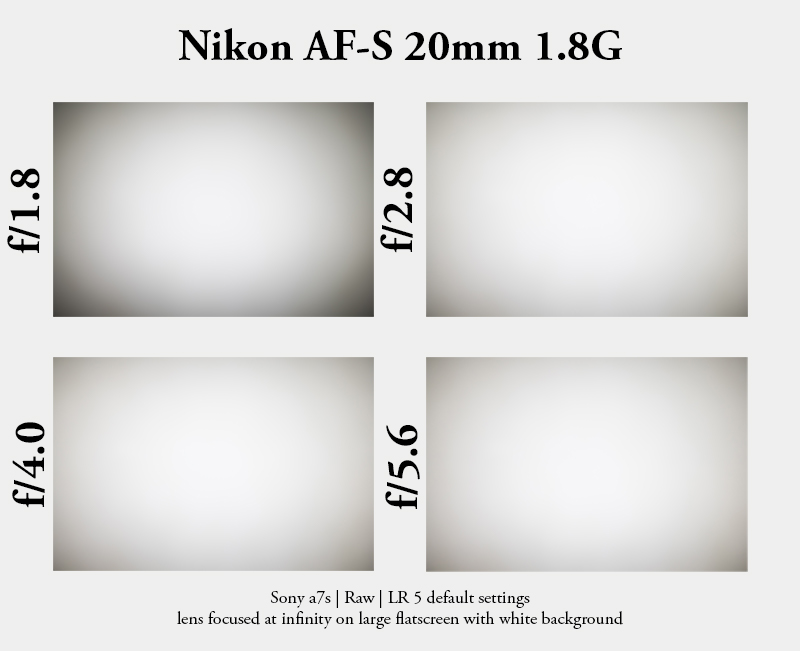
There is visible vignetting at f/1.8 which of course improves on stopping down. There is also a profile for correction embedded in Adobe Lightroom. This is a pretty typical performance for a lens with these parameters.
Sharpness
infinity
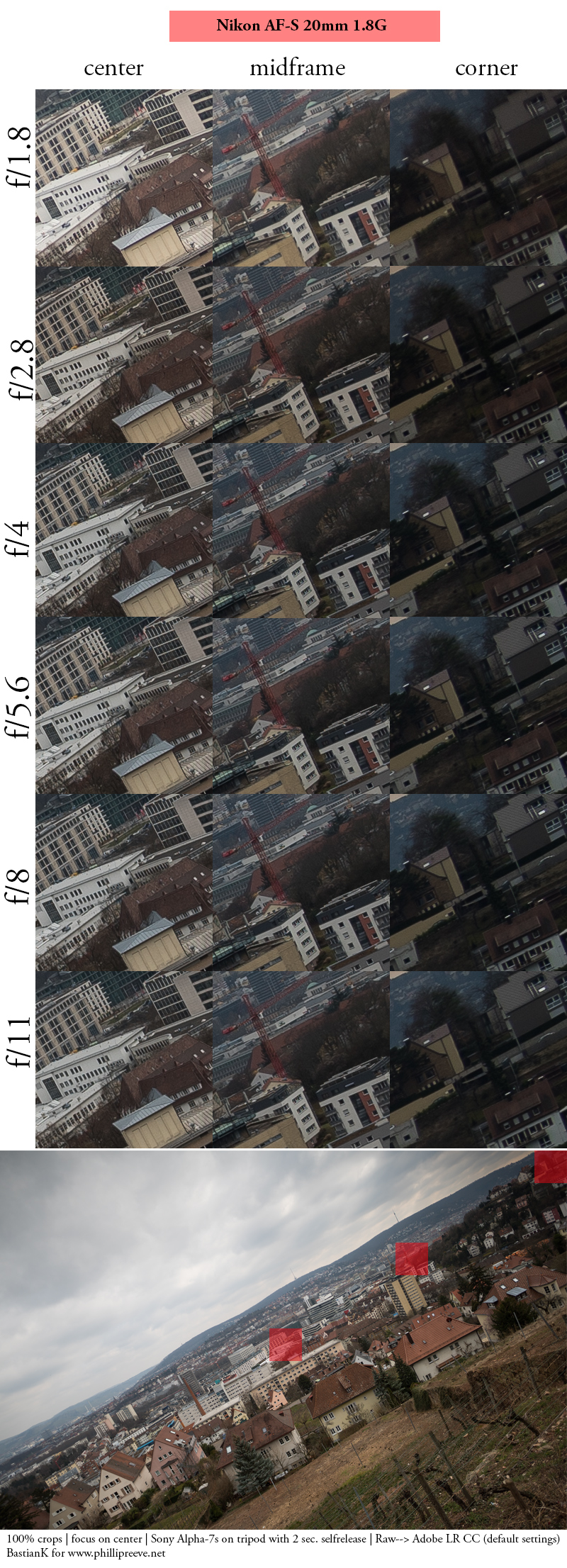
The sharpness is already very good at maximum aperture across the whole frame except for the extreme corners. The corners reach good to very good resolution from f2.8 and from f4.0 onwards I would call them excellent. If you need very even sharpness across frame I recommend shooting at f4.0 to f11. For handheld shooting, especially at higher ISO, I wouldn’t hesitate using it at maximum aperture.
close focus
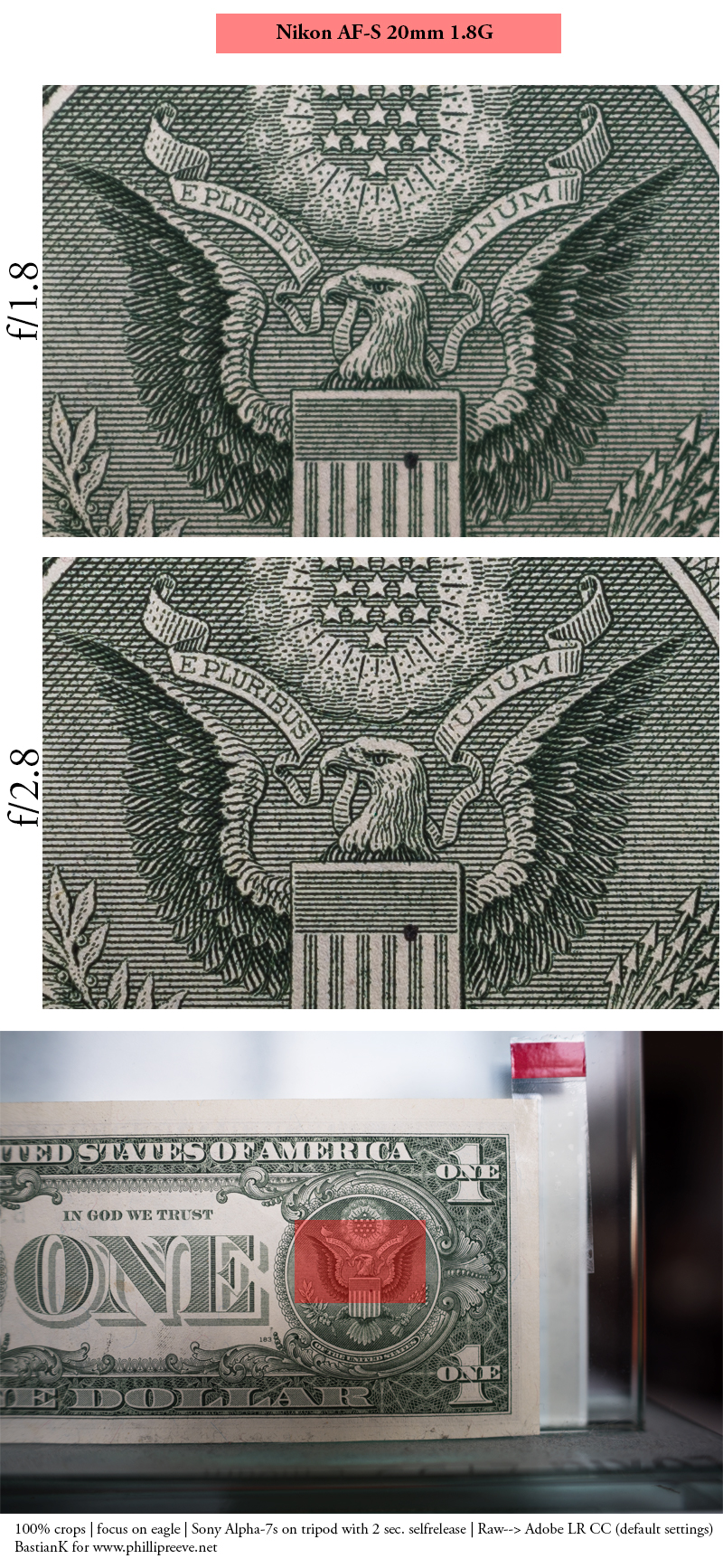
Even at maximum aperture the resolution and contrast at the minimum focus distance are very good. From 2.8 onwards they are both excellent.
Flare resistance
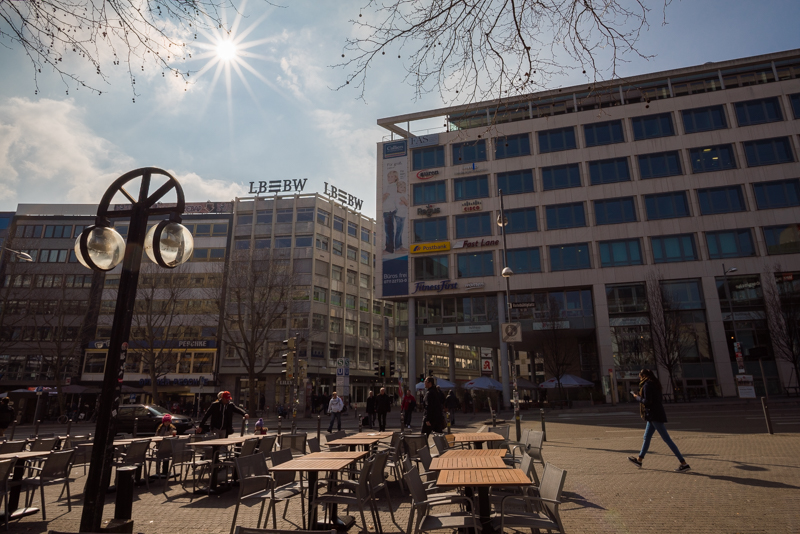
The flare resistance is very good with this lens. The Nano coating helps to prevent loss of contrast in contra light situations, even when shooting directly into the sun. In the picture above you see the worst I could produce (take a look at the lantern and the lower right).
Coma

This is where it gets really interesting. As you may already know I am quite the fan of astro-landscape photography (see my flickr album, to see my astro work :-)) where coma performance is a very important factor.
As can be seen in the pictures above there is visible coma in the corners at f/1.8, but as of today there is no 20mm lens which is as fast and offers better performance (I tried the new Sigma 20mm 1.4 Art whose performance is about the same but which is too big and heavy to comfortably use on A7 cameras, the older Sigma 20mm 1.8 has awful performance, for the fast rangerfinder lenses see the “Alternatives” section). Apart from that, slight coma in the corners of a fast wideangle lens is one of these things people (who often do not have taken even a single astro landscape shot) like to constantly complain about in internet forums, but which is rarely noticed in real world photos.
In my opinion the coma performance is as good as it gets with a 20mm lens with a maximum aperture of f/1.8 and this is one of my two main lenses for astro photography (alongside the Nikon 14-24mm 2.8G). I rarely stop this lens down for astrophotography and mainly use it wide open.
You can find an unedited shot of the milky way in full resolution here.
Distortion
Sony A7s | Nikon AF-S 20mm 1.8G | f/8 | distortion before/after
There is some slight barrel distortion which can easily be corrected with the corresponding Lightroom profile in post, as can be seen in the example above. As this is a rear focus lens the influence of the focus distance is negligible here.
Bokeh
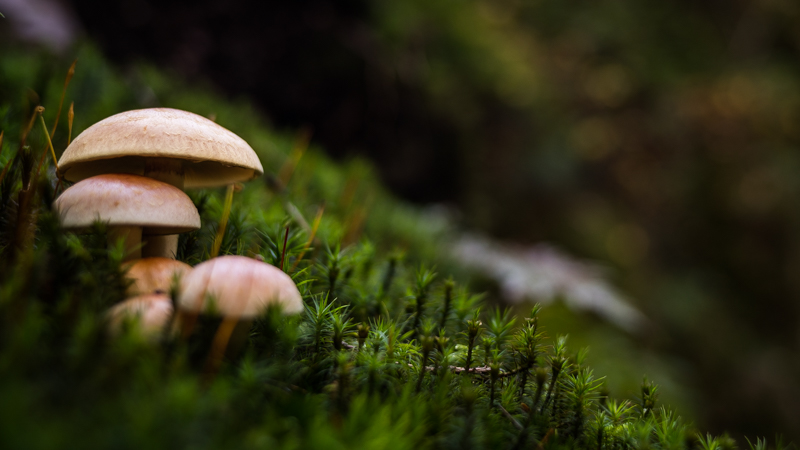
With a 20 mm lens, even if the maximum aperture is 1.8, you have to be pretty close to your subject to see distinct bokeh. But when you do, the quality is actually really good as there are no outlinings and rarely visible onion rings.
Please forgive me for including one shot taken with a D800, but this is simply the best example for what you can do in terms of bokeh with such a wide angle lens:
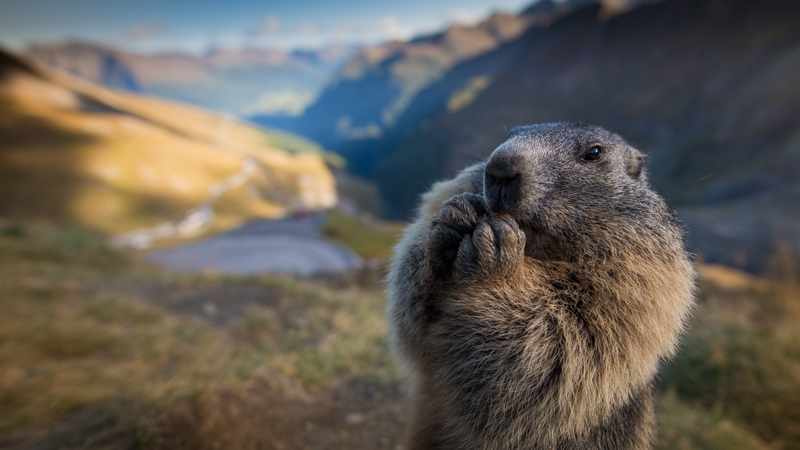
Sunstars
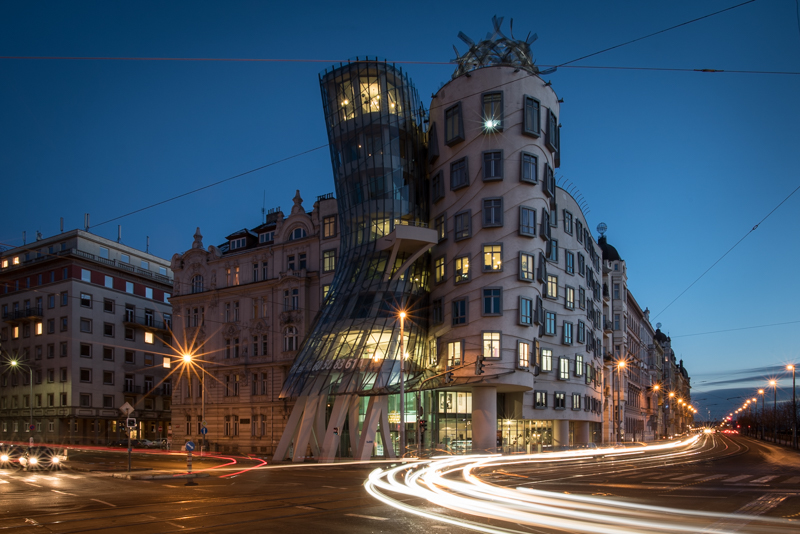
Among Nikon users this lens is pretty famous for it’s 14-pointed-sunstars, which are indeed well defined and quite nice. Nonetheless I slightly prefer the sunstars produced by 10 straight blades as can be seen with the 21mm 2.8 Loxia or the 28mm 2.0 Ultron and the 50mm 1.5 Nokton (review following).
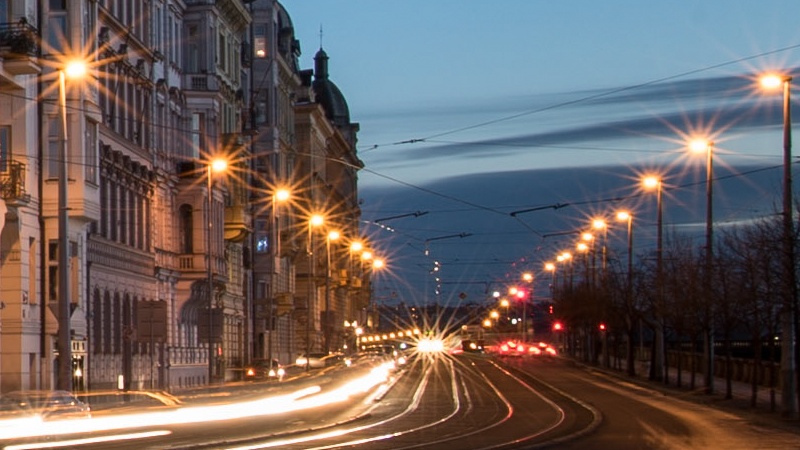
Chromatic aberrations
longitudinal
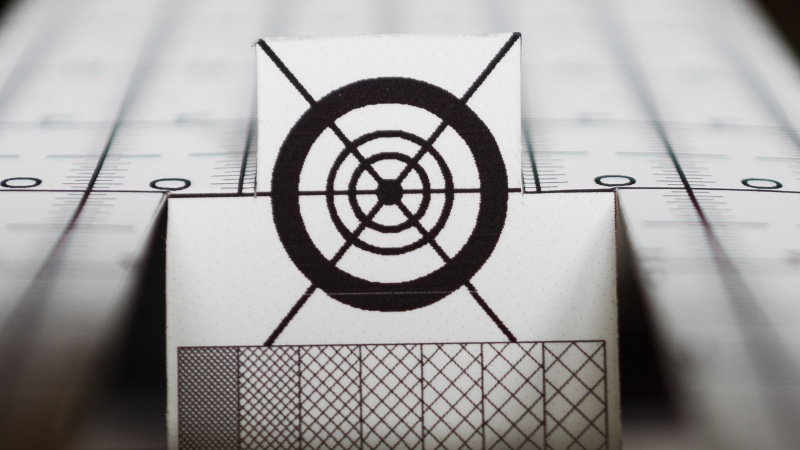
In real world shooting I did not even once notice loCA in a bothersome way in any of my pictures. Even at the minimum focus distance they are rarely visible. This is really great performance for such a fast lens.
lateral
Lateral CAs are pretty much a non issue as well throughout the whole aperture range. Take a look at the example below (100% crop), the CA are so minor, you will probably have a hard time spotting the differences.
Sony A7s | Nikon 20mm 1.8G | f/8 | CA 100% crop before/after corner
Alternatives
The first one that comes to mind is of course the Zeiss Loxia 21mm 2.8. I expect better build quality and – because of the native E-mount – better handling. If I weren’t seriously into astro landscape photography I may have bought the Loxia, but as it is I perfer the 4/3 stop advantage of the Nikon lens. When it comes to the optical qualities I don’t see them very much apart.
Other fast rangefinder wide angle lenses would be the Voigtländer 21mm 1.8 Ultron and the very expensive Leica Summilux 21mm 1.4. I haven’t used either because from what I have seen I can only call their performance regarding coma wide open pretty awful. This does not only apply to the A7 series cameras but also to the digital Leicas, as Ron Scheffler has shown in this blog post (night lit scene with Leica M9 download at the bottom). Because of my shooting envelope (astro landscape) this was a very important factor to consider, YMMV. In terms of weight and also price you don’t get an advantage here as well.
There are of couse a bunch of other, mostly older (and considerably cheaper) 20mm lenses, like the Canon FD 20mm 2.8, the Minolta MD 20mm 2.8 and many more but they are not as fast, the corner performance wide open is more than often nothing to write home about and same goes for the coma correction. But in case you don’t need f1.8 in a wide angle lens, or in case you are mostly a stopped down shooter, they may be a good and cheaper alternative for you.
Conclusion
good
|
average
|
not good
|
I had a hard time with the ratings above, especially where to put price and coma correction, so let me say a thing or two about these: the Nikon 20mm 1.8G is definetly not a cheap lens, but for what it is, and when taking into account the alternatives, the price is more than justified by the performance in my opinion. The performance regarding coma at the maximum aperture is not flawless, but it is also better than the average 20mm lens and stopping down to just f/2.8 improves the performance dramatically, so I simply can’t fault the lens for this. The only real drawback I came across is the slight slack in the focusing ring when changing the direction of rotation. In case you are mainly used to manual focus lenses made of metal you may also find this lens a bit “plasticky”.
So, who is this lens for? Anyone, who looks for a lightweight, high performance wide angle lens, which is not as expensive as the Zeiss Loxia 21mm 2.8, while also being 4/3rds of a stop faster. Apart from convenience and build quality you are not really giving anything up here in comparison. But if you don’t need the fast aperture in a wide angle lens (and this may apply to many of you) there are even cheaper alternatives in the 20mm range (see “Alternatives” section).
This lens can be ordered new for $750/650€ on Amazon.com/Amazon.de/B&H you can also find used ones on ebay.com/ebay.de (affiliate links). And in case you need a decent adapter with aperture control, take a look at this article.
Sample Images
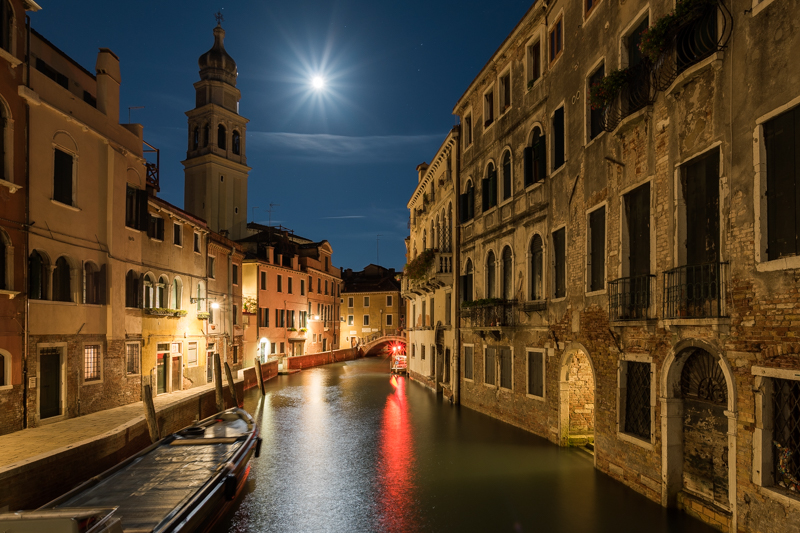


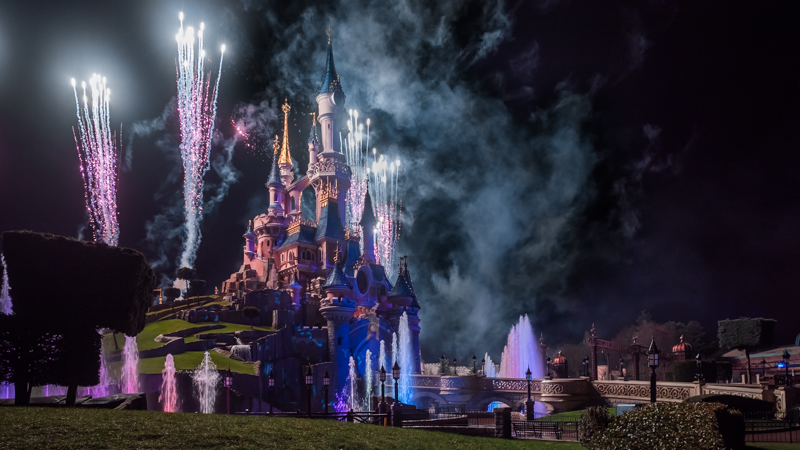
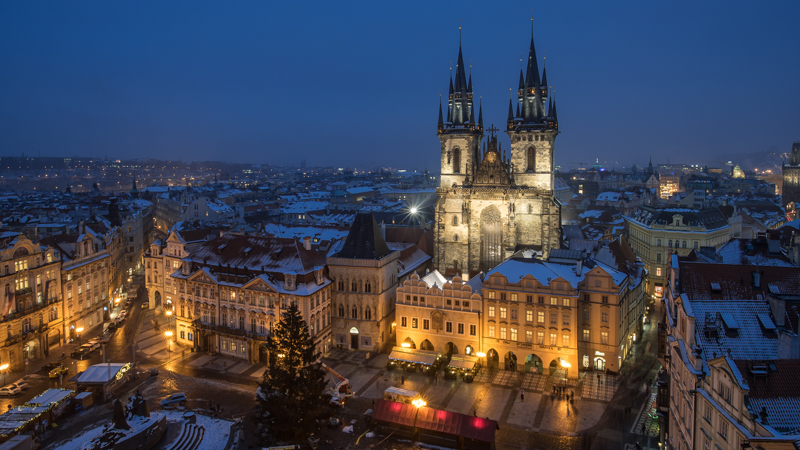
I have set up a flickr album which contains many shots taken with the Nikon AF-S 20mm 1.8G and I will add more pictures to it in the future. Watch out: some shots have been taken with a D800, so take a look at the provided Exif data.
I also wrote a small “first-hands” review for nikonrumors.com, as I was an early adopter of this lens.
Support Us
Did you find this article useful or just liked reading it? Treat us to a coffee!
![]()
![]()
![]() via Paypal
via Paypal
This site contains affiliate links. If you make a purchase using any of the links marked as affiliate links, I may receive a small commission at no additional cost to you. This helps support the creation of future content.
Latest posts by BastianK (see all)
- Review: Viltrox AF 85mm 2.0 FE Evo - October 20, 2025
- Review: Viltrox AF 50mm 1.4 FE Pro - October 16, 2025
- Review: Laowa AF 200mm 2.0 C-Dreamer – The Chinese Air Cutter - October 14, 2025
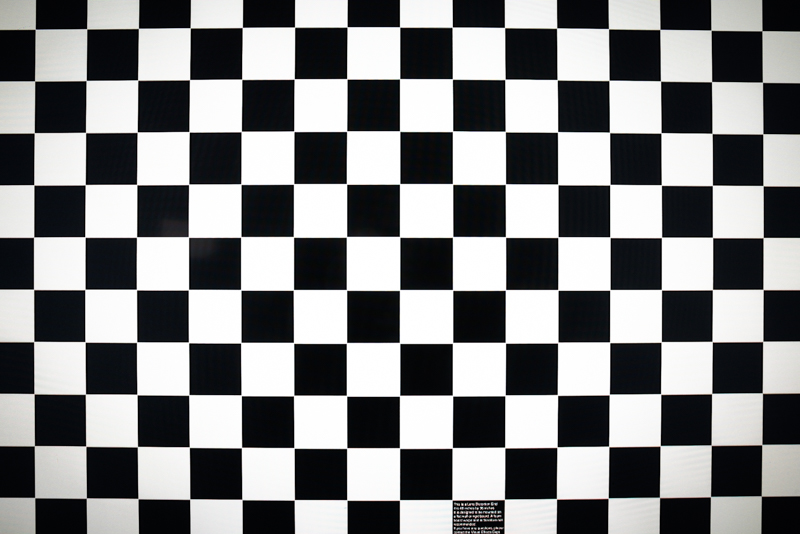



Bastian – Great and timely review again. I agree manual focus on a 20mm lens is generally no problem, but is it difficult to pinpoint focus on stars for astrophotography (or perhaps the infinity mark is accurate?)
Thanks!
Dear Jordan,
if there is any AF lens where the infinity mark is accurate, this will probably just be a coincident 🙂
It is also worth mentioning that some adapter manufactures “play safe” and producing there adapters a little shorter, so it is guaranteed to be able to get to infinity in the first place.
When it comes to astrophotography I always look for a bright point of light far away (star, streetlantern) and focus by using liveview. The moment the point of light is the smallest is also the point where it is the sharpest.
Hi there! Great review!
Will you guys be reviewing the Batis 25 anytime soon?
Hey, as far as I know none of us is planning on buying one soon, but maybe we will get a loaner.
I would definetly like to do a review of that lens.
Hello
you’ve tried the AI Nikon 20mm f / 4 or AIS Nikon 20mm F / 3.5? and MIR-MC 20mm f / 3.5
Not yet, no.
To add onto Juan’s list – the Nikon 20mm f/2.8 AI-s?
The 20mm f4, ais f3.5 are great for close ups and sunstars, but not good at infinity. The 20mm f2.8 , not for close ups and all are MUCH worse performers, at 36M and even at 12 Megapixel camera’s. Softer already from 20% out of the centre of the frame. the 3.5 AIS and 4.0 AI version are great for IR-photography. I have no experience with the MIR. The 20mm f1.8 is my most used lens also used a lot during time lapsing Milky Way and landscapes ( with D800+D750) Have a look what the 20mm f1.8 does in a astro time lapse contains milky way + aurora from New-Zealand
https://www.youtube.com/watch?v=vYPTqQ-QWjc&list=PLMop6hQFvsU_rbOrGSA8g2TI4s7uK8mSr&index=2
It is a wonderful night sky you have there, gotta book some flights 🙂
Great review thanks! I yesterday shot my first astro photos, and so far i am very happy with the overall performance, but i have some issues with the infinity focusing, i feel its not accurate and stars looks blurry when zoom at 100%, any suggestion?
https://www.flickr.com/photos/free3yourmind/28872830591/in/photostream/
You might be right. I always use Liveview, look for the brightest star, zoom in and turn the focus ring until the star appears to be the smallest. If it is the sallest it is alsomhe sharpest.
Bastian
All of your reviews and write ups are great. Thanks. Did you have issues attaching the Nikon 20mm to the Metabones adapter? I just bought the Metabones adapter that you have pictured and can’t get it to attach to my Nikon 20mm 1.8. It seems to fit on but only turns like a centimeter before feeling like it can’t turn anymore. What am I doing wrong? I tried my Tamron 24-70 2.8 as well and that did not work either.
Thank you Doug!
I know the problem you are talking about very well.
A few week ago I borrowed someone my adapter and got it back with the exact same issue.
The problem is this:
Inside are three little bend plates that hold the lens in place, one of them is
probably sticking out just a tad too much.
My theory is, if you put a lens on the adapter and turn it in the wrong direction you bend the pins in the wrong direction as well
and it isn’t possible attaching a lens anymore.
You got two options here:
1. Return the adapter in exchange for a new one
2. Try to bend the pins in the right direction with 2 very small screwdrivers
Bastian
I appreciate the quick reply. I will give it a try.
Hi Bastian,
I really enjoy your reviews on lightweight wide angle options. I currently am using the zeiss/sony 16-35 f4 and enjoy it, but I find I myself using my contax zeiss 35-70 for most of my work and was considering selling my 16-35 due to its steep price and low use and picking up a cheaper prime wide angle. Would the nikon nikkor 20 or 24mm f2.8 perform similarly to this lens at all? Or would your recommend any other legacy wide angles?
Thanks!
Joe
Hi Joe,
I don’t really like the AF-D 20mm 2.8 and AF-D 24mm 2.8 lenses, in case that are the ones you are talking about.
Maybe our comparison for wide angle lenses is of interest for you?
Bastian
Thanks! I will probably just keep the 16-35 for awhile as it is very convenient. The reviews you guys do and lists are super helpful as well! The lists and guides you guys have been putting up are a great way to bring all the reviews together.
Thank you BastianK for this useful discussion,
I am using sony a7ii camera. And I am planning to buy 20mm lens for landscape and astrophotography.
I have read your review and it is very nice written. But for me, the size of the lens is quite important.
As far as I know, there is a big difference between Nikon 20 f1.8 and Loxia 21 f2.8 and that is speed.
However, How many of astro shots are using this advantages? Because most of the photos (I’ve seen) have be taken around 2.8 and slightly above.
Another question is what would be the effect of native lenses like Loxia and converted one like Nikon on the quality, vignetting and coma of the pictures?
For me who does not have the Nikon adaptor (surely I have to pay for well-built adaptor as well), what would be your suggestion for around 20mm lenses?
I really appreciate your help.
Pretty much all of my astrophotography shots with the Nikon lens have been taken at f/1.8.
The Loxia 21mm 2.8 shows less coma compared to the Nikon (at the same aperture) but vignetting is higher.
A too short adapter can have a negative influence on corner sharpness and coma with internal focusing lenses
like the Nikon 20mm 1.8G. As of today the Novoflex adapters seem to be the best.
Nikon 20mm 1.8G + Novoflex adapter should still be less expensive compared to the Loxia.
If you are not in a hurry it may be worthwhile to wait for a real review of the new Tokina Firin 20mm 2.0.
Unfortunately the manufacturer wasn’t yet able to provide us with a review sample.
Hi Bastian,
Great review – not my first time reading it as I go back and forth around the web trying to decide what to buy! I’m very much tied by budget but looking to invest in a good quality lens covering wide angle on a Sony A7. Currently I’m looking at this lens vs the Samyang 20mm F1.8. Do you have any experience with it? Any ideas what the image quality difference would be, especially considering that adapters get a bad reputation for quality as light bounces around the inside.
Thanks,
Will.
Dear Will,
I have no first hand experience with the Samyang 20mm 1.8, but as you may not know this is also a DSLR design like the Nikon lens.
It is available with E-mount, but it is nothing but the DSLR lens with a “glued” adapter and looks like this.
Hi Bastian
I love your reviews a lot. They are clear, detailed and with beautiful sample shots. I just want to throw in a 20mm lens for your consideration in testing as I find it work pretty well on my a7 and a7ii, that is the Voigtlander Color Skopar 20mm f/3.5 Aspherical MF SL II Lens. The one I have is the Canon version. I know the aperture is not big enough for you who is an astrophotographer, but to those who don’t require such a large aperture would probably find this lens lovely.
Here is a shot taken with the lens by me:
https://www.facebook.com/ryan.lightbox/photos/a.130843607456297.1073741828.129966387544019/142956139578377/?type=3&theater
Cheers
Ryan
Dear Ryan,
thank you for your feedback!
The Voigtlander 20mm 3.5 certainly is a very interesting lens!
Correction, mine is the Nikon version. Anyway, I guess there would be not much difference.
Hi Bastian,
After reading some reviews on the Tokina Firin, I am really curious to know how well could it perform against the Nikon 20mm 1.8G, especially in astrophotography, as their list price is pretty close. Hope you can get one for testing soon!
Ryan
We tried getting a review sample of the Firin 20mm 2.0 several times by now. No luck so far.
Besides that it seems to share the flare issues with almost all the other Tokina lenses…
Hi,
thanks for all of your good reviews.
I’m looking into buying a 20mm / f1.8-2.8 for (Astro) Landscapes. It has to double, because together with my A7 and a 35mm it will form my somewhat lightweight travel kit (I do backpacking a lot and I figured out, that all I need is 35 for everything and a nice landscape lens).
So, on my list are:
Nikon 20mm / f1.8
+ lightweight (not so much with adapter), good performance, not too expensive
+ no EXIF, manual adapter (I’m still looking into the commlite, but from what I read it doesn’t look very promising)
Samyang 20mm / f1.8
+ cheap, quite good performance according to some reviews
– bulky, no EXIF, build quality, no good >24MP
Tokina Firin 20mm / f2.0
+ reasonable priced, not too heavy, EXIF
– performance issues
Zeiss Loxia 28mm / f2.8
+ performance excellent, EXIF, great manual integration, leightweight
– expensive, “only” f2.8
I’m a bit torn here. Price is not that much an issue, the Zeiss will hurt, but it’s doable. I have more qualms about the f2.8. I recently shot the Milkyway with the Sony 28/f2 and found the foreground (a mountain, it was pitch black dark) to be barely visible between ISO 1600 and 3200. Apart from that I think that the picture gets very noisy from ISO2000 on, so I’d like to have some room here. With a 20mm / f1.8 lens I could expose a tad longer than with the 28 (around 25s vs 15s -> 2/3 stops) + 1/3 stop from f2 to f1.8, that’d give me a full stop. I’ve also considered buying an A7S but it has 1 stop less DR compared to the A7.
To complete my kit with a 35mm I’m leaning towards these options:
* Nikon 35mm / f1.8, I could reuse the adapter, but lacking EXIF would make it even in post
* Loxia 35 / f2.0, expensive, but good, manual focus only (I mostly use the lens prefocused, except for portraits, where I don’t want to make my subject wait for too long)
* Sony-Zeiss 35 / f2.8, which I currently own. I’ve gotten recently a bit disappointed with it’s performance, because I have flares in almost every picture where I included the sun for a sunstar.
And there is the 1635f28 GM, that I could have always on my A7 body, big advantage in dusty conditions (did I have some problems with that…). But it’s only f2.8 and a Zoom, which might deteriorate the IQ.
I like the Sony Zeiss 55mm / f1.8 in terms of sharpness, but I will remove it from my travel kit, because I barely use it.
So, to sum it up, do you have any recommendations for me? I was even looking at a D750, because it only weighs around 250g more than the A7 and the 20mm + 35mm are not that heavy. In total it should not be much heavier than the A7 with Loxias or the adapted 20/35mm Nikons. However, I don’t really want to give up on my A7, because I got it early this year and I like that way of shooting much better than with a DSLR.
How the actual hell did you get that close to that prairie dog lol
Ok so decided that I will sell my FIRIN 20mm and my Pentax 28mm and get this lens (I’ll use your link 😉 ). My only question is, did you ever notice any sensor reflection with this lens? I don’t see any with your photos but photos from some other reviews looked like there may have been some
Thanks mang
Ah I don’t recall ever having seen some 🤔